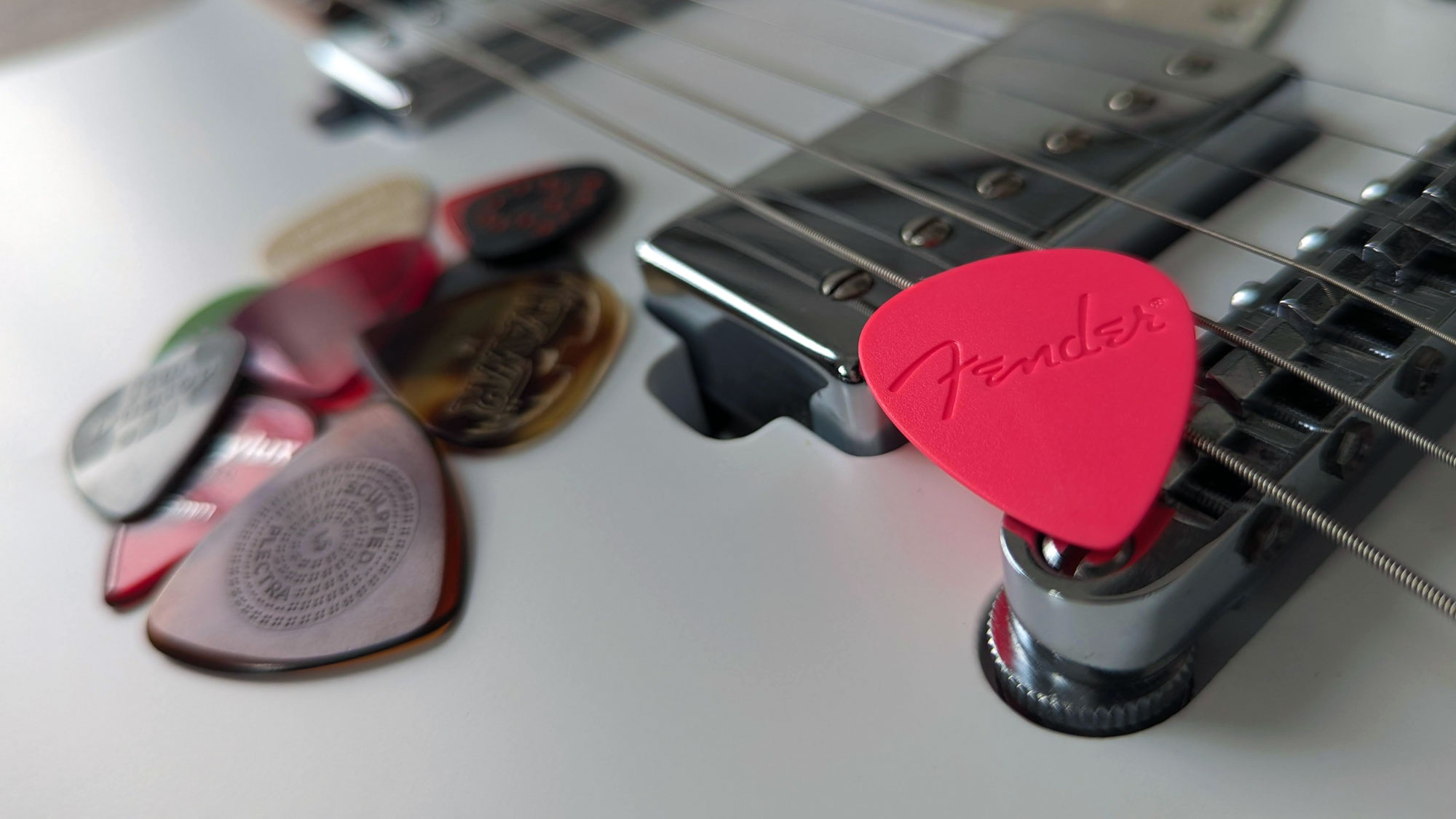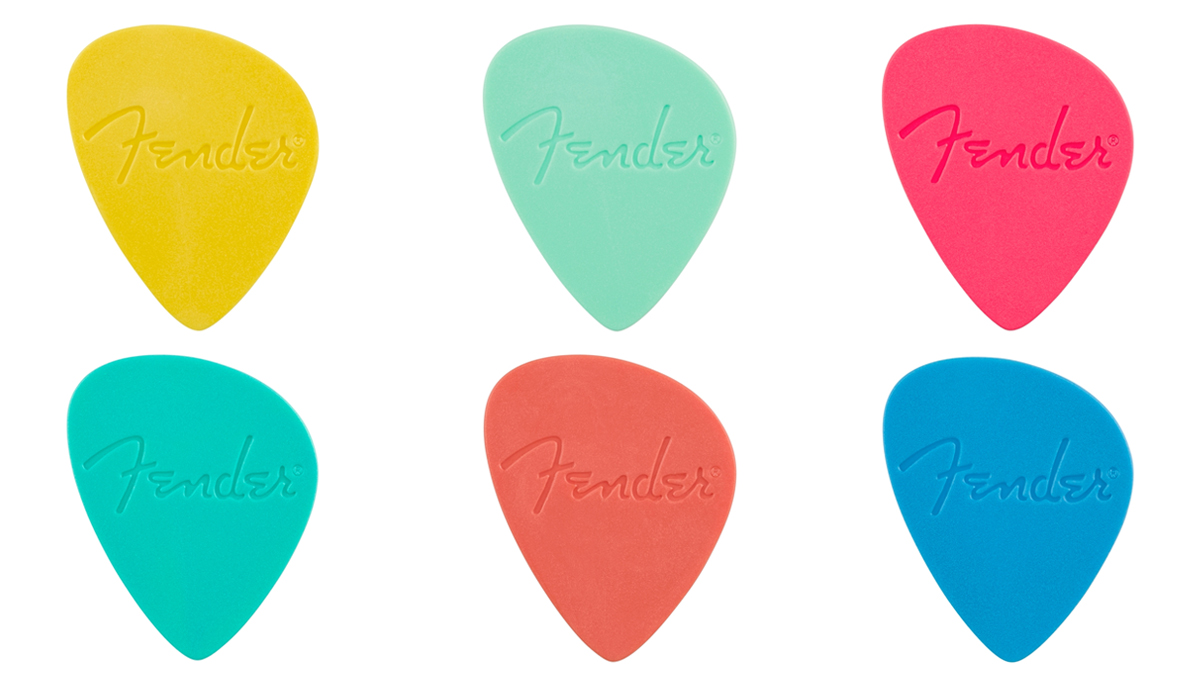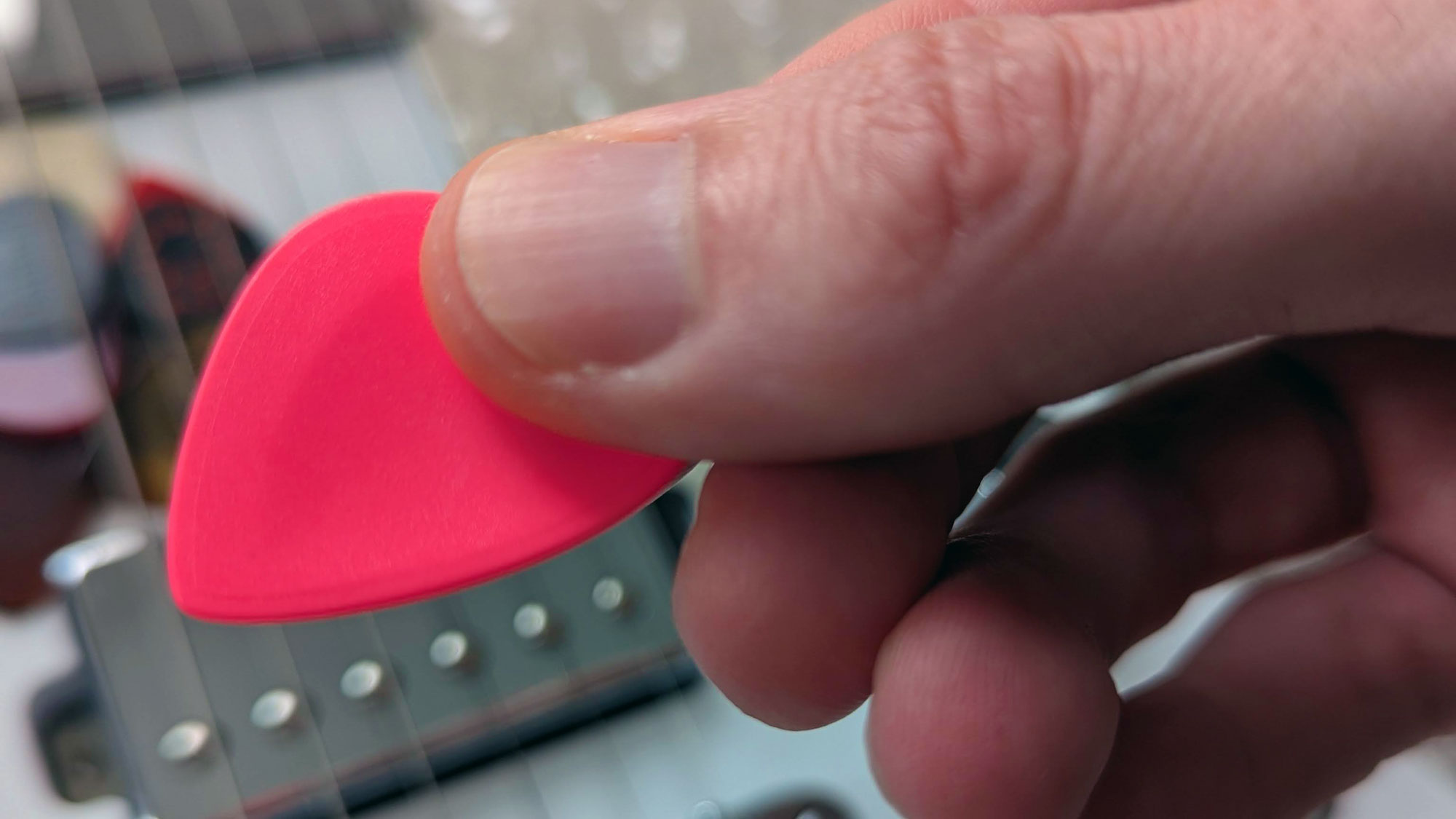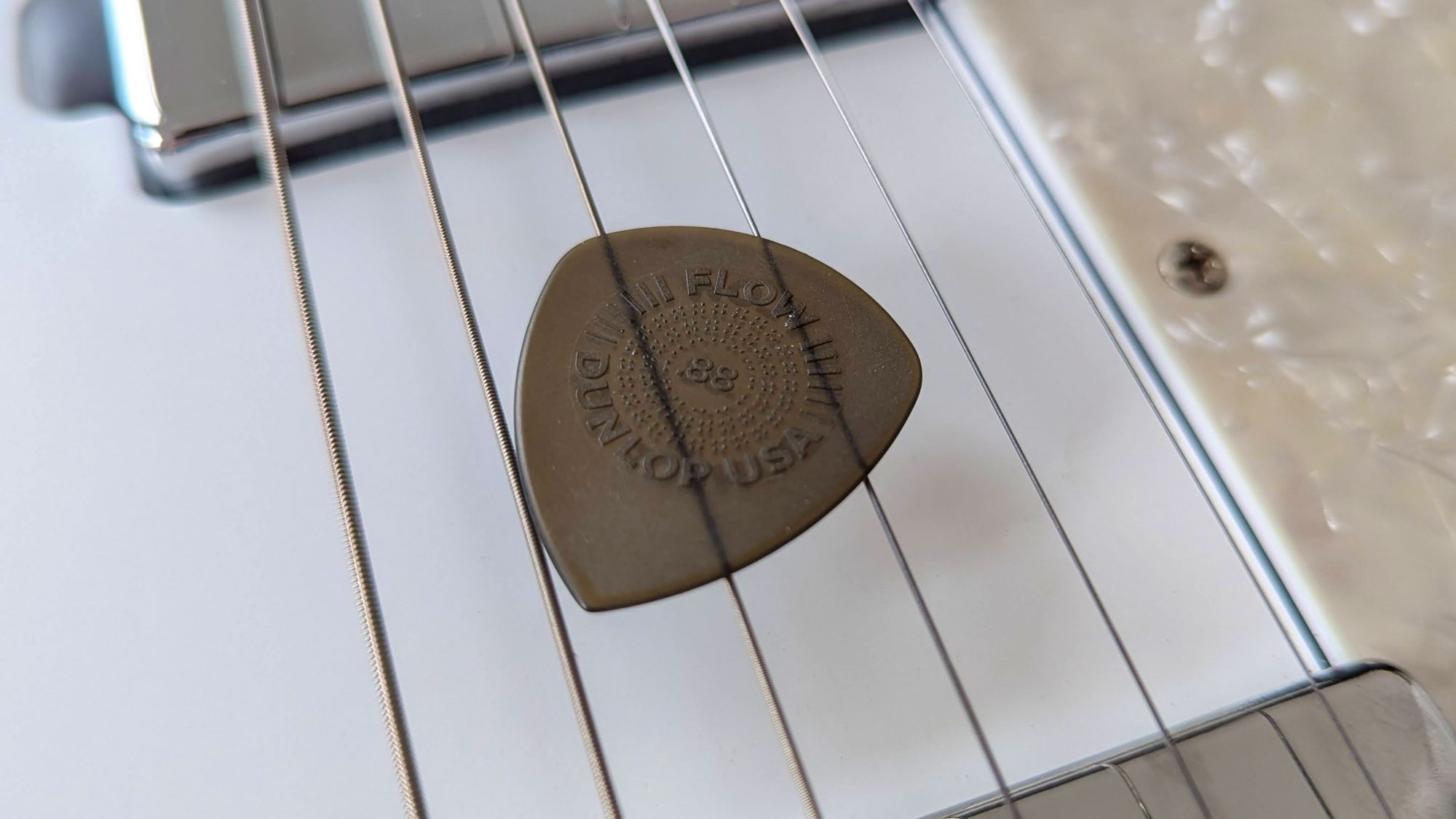
As my bio attests, I love offset guitars. So I was very much Fender’s target market when the guitar giant dropped a new line of Offset Picks, launched in the kind of vivid finishes that are catnip for hipsters.
Part of our job at Guitar World is to translate over-exuberant PR speak into real-world terms, but the product description was so overwhelmingly hyperbolic, I found myself being sucked in out of morbid curiosity (despite having loyally stuck to Dunlop’s industry-standard Tortex guitar pick variants for two decades).
“Elevate your playing experience.” “The game-changing pick you never knew you needed.” “The most versatile pick EVER!” Fender was one step away from claiming these plectrums could broker international peace deals.
So I did what any self-respecting editor would do and requested a set, determined to fact-check these world-beating claims. And not to insert a clickbait headline mid-copy, but what I discovered surprised me.
Easy pickings?

For starters, these picks are comfortable to hold. The indentation on one side melds with your thumb, which means less pressure required to keep it on hand.
I felt more emboldened to throw in swept and alternate-picked runs. It genuinely felt like I was playing better than ever
Fender’s “durable polycarbonate material” generates a satisfyingly bright attack with every note, lending extra clarity to arpeggiated chords and alternate-picked runs.
The aesthetics may be geared towards Jazzmaster acolytes, but in terms of how they actually perform, the 0.83mm Offset Picks are better suited to shredheads. The angled shape makes for more precise movements, easier sweep picking and string skipping. In fact, they reminded me a lot of Dunlop’s Flow picks – favorites of metal gods like James Hetfield, Misha Mansoor and Jeff Loomis. As I say, not what I expected.
The more I incorporated Offset Picks into rehearsals and gigs, the more I realized I had missed out by not experimenting more with plectrums over the years.
My tone had more clarity than using comparative Delrin-based picks, and my picking was more accurate than with my usual Tortex Sharp. I felt more emboldened to throw in swept and alternate-picked runs. It genuinely felt like I was playing and sounding better than before.

But there were signs that these weren’t quite the right fit, too. For one, my ADHD tendencies have apparently made me a perpetual pick fidgeter – I’m constantly rotating the plec in my hand, and I will switch between thumb-and-index and thumb-index-and-middle (à la Hetfield) holding patterns depending on the part – and the one-side-only thumb imprint enforces a particular way to hold the design.
Also, despite the snazzy embossed Fender logo, I just couldn’t keep hold of the things. A hint of sweat and they were slipping through my fingers like I’d dipped my digits in a vat of Big Bends nut sauce.
It made for an interesting first, when I threw a pick into the crowd by accident – and another first when an audience member picked up the discarded plec and brought it back to me (hero).
Flow state
The offset picks were not the answer then, but newly out of my Tortex torpor, I felt emboldened to look more widely. So like a wizard choosing a wand (or is it the wand choosing the wizard?), I set upon a pick quest.
Like a wizard choosing a wand (or is it the wand choosing the wizard?), I set upon a pick quest
Unlike Mark Tremonti, I didn’t quite manage to try “every pick ever made”, but I dug out all the picks that had been sent to me for review over the years – many of which I rated, but never saw any reason to switch to myself, reasoning, “I don’t need anything fancier than Tortex…”
Acrylux, Gravity, Herco, Dava, Hawk, Prodigy, Nylon, Prime Tone, TUSQ… Turns out I’d amassed a pretty exhaustive collection, and they each had their own merits. When it came to tone, my general rule of thumb was: the shinier the pick’s finish, the snappier the top-end response. That enhanced presence became the tone I craved – the missing ingredient in my signal chain – and there were plenty of picks that fit the tonal bill.
It wasn’t hard to pin down the type that improved my technical accuracy, either: sculpted picks reduced the chance of getting stuck on the string, making for a more fluid performance.

But in the end, from my amassed collection, only one pick combined the best of both worlds: the original Dunlop Flow.
It had been six years since I had last picked one up. Back then, it had seemed like an unnecessary extravagance. I didn’t deem myself worthy of the ‘virtuoso’ tag that these plecs seemed to demand.
But now I’m more comfortable in my abilities and what I want to achieve, regardless of technical ability. There was that clarity in every note, that ease of picking, and a tactile grip that wasn’t going to leave me fingerpicking the rest of my next show. It was the pick my playing had been waiting for, and I’ve been hooked on them ever since.
Fender’s Offset Picks may not have been the destination, but they did kickstart a journey that made me finally pay attention to the crucial role that guitar picks play in your tone and playing style, and set me on a path to a genre of pick that makes me sound and perform better. “The game-changing pick you never knew you needed”? I guess it was after all…







